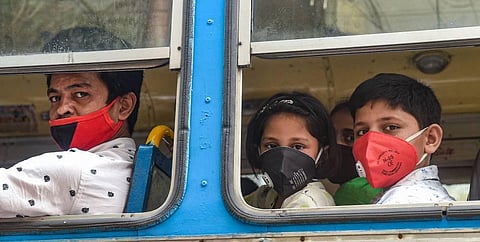

Cyclone Fani in May 2019 caused huge devastation in Bhubaneswar, the capital city of Odisha, and nearby areas. The fallen trees on the roads brought life to a standstill. This also put the brakes on the popular City Bus Service, Mo Bus, run by the Capital Region Urban Transport (CRUT), a special-purpose vehicle of the state government. The ridership of Mo Bus came down drastically. The company took weeks to recover from the shock. Back then, nobody anticipated a tsunami called Covid-19. The city bus service had an average ridership of 1.15 lakh passengers per day in the first two months of year 2020. In the month of March, it was close to zero.
The Covid crisis has crippled all sectors of the economy, not only in India but across the world. Public transport is one of the worst affected sectors, as it will face long-term effects due to Covid-19. Urban public transport is usually a loss-making venture. There is hardly any public sector city bus service in India and even around the world that makes a profit. Covid-19 has deepened these financial difficulties further. During the lockdown for almost two months, the bus services were stopped. Now when the sector is opening up, the requirement of social distancing is a major challenge. The CRUT, for example, has announced that all passengers have to wear a mask and there will be no standing passengers. In city bus services, standing passengers form a major part of total ridership. The social distancing norms have obviously hit them hard financially. Anyhow people are extremely cautious in moving out and travelling. Due to the fear of infections, travel is now undertaken only as a necessary evil.
Another issue is the safety of the bus crew. Drivers and conductors of public buses are exposed to the threat of corona infection. Conductors especially have to interact with hundreds of people every day and exchange tickets and cash with them. Adhering to social distancing rules is not easy for them. Most of the companies are providing PPEs to their staff. However, in the summer season, continuous use of PPEs in non-AC buses is suffocating and almost impossible. AC buses have more or less gone out of service due to fear of infection.
During the Covid-19 crisis, the public transport sector has also seen some positive changes such as increased digital transactions. Bus companies have wanted to move towards digitisation for long as it helps in controlling revenue pilferage. However, many people were not adapting to the digital mode. Now in every sphere of economic activity, digital transactions are increasing. In buses too, people don’t want to exchange physical tickets and currency notes that are touched by multiple people during their circulation. This fear has benefitted public transport in terms of increased use of digital modes of payment.
Another silver lining in this dark cloud is the awareness towards the environment. For years, experts have been warning us about the disastrous impact of road traffic on the environment. But this is the first time that we can see this impact with our own eyes. In the last few months, the skies and air are cleaner. Wildlife is reclaiming its space. We can see more birds all around. People in the plains like Punjab and Bihar could see the mountain peaks of Himalayas for the first time. These visuals are likely to stay in human memory for a long time to come. One can hope that it will rekindle interest in the protection of the environment and a new thrust for the use of public transport.
In spite of inherent financial weaknesses and Covid-19 induced fears, public transport is an indispensable part of urban life. Lakhs of people depend on city buses for their daily commute. We know for sure that the absence of effective and efficient public transport has a negative impact and results in traffic congestion, air pollution, etc. The governments have been rightly supporting the sector over the years. Even now, despite the severe financial hardship, state governments have announced tax exemptions for public transport vehicles so that the services do not collapse altogether.
The increased dependence of the public transport sector on the government is likely to continue for a few months, if not years. However, given the current fiscal scenario, the government has limitations in supporting any particular sector. We have to find innovative ways to revive and sustain the services. For example, government employees can be encouraged to travel by public transport, saving transport allowance on the one hand and resulting in an increase in bus ridership on the other.
One main reason for less ridership is the fear of infection in crowded buses. A policy of staggered working hours both for the public and private sector can help in better Covid management by reducing peak hour demand and ensuring optimum use of public transport. There is also a need to educate people about Covid-19 measures like disinfection of buses and adherence to social distancing norms so that their faith in public transport is restored. Many countries are promoting cycles and ebikes as a mode of transport that takes care of social distancing.
In spite of the gloomy situation, public transport has to run. A lot of other activities depend on this sector. You cannot think of Mumbai without BEST buses or Delhi without the Metro. In the current crisis, an intelligent combination of policy in terms of customer care, financing and increase in non-fare revenue has to be employed, so that multiple objectives of economy, environment, health and affordability are achieved without much burden on the already stressed government exchequer.
Arun Bothra - IPS Officer and Managing Director of two public sector bus companies
(Tweets @arunbothra)